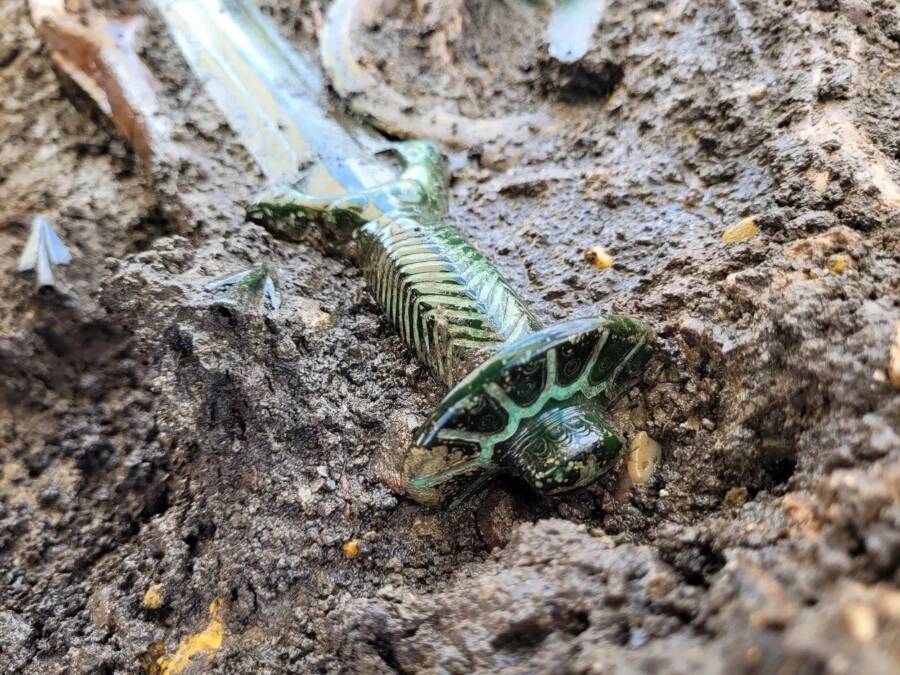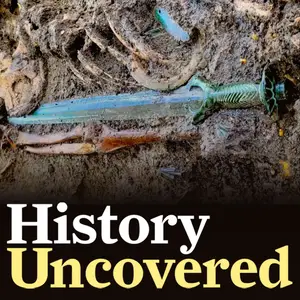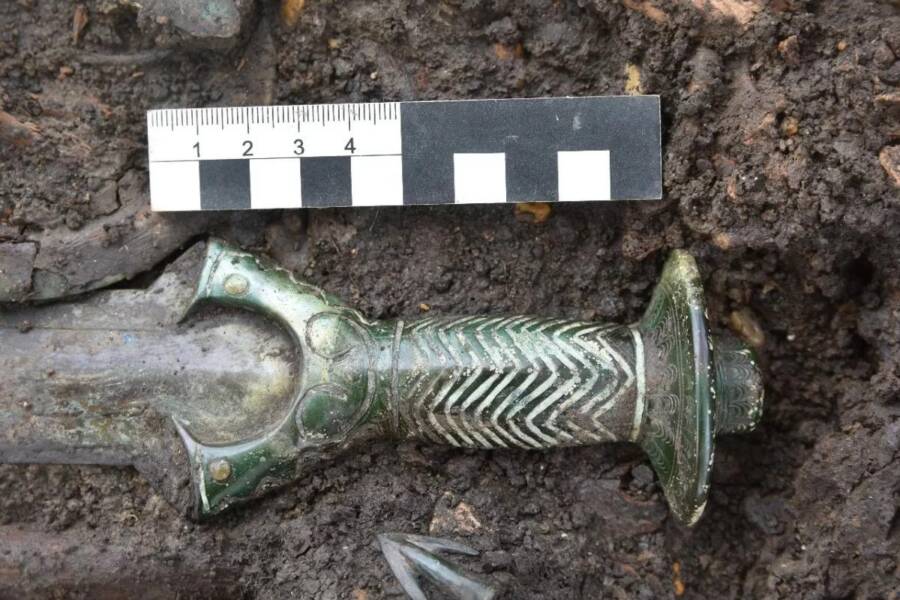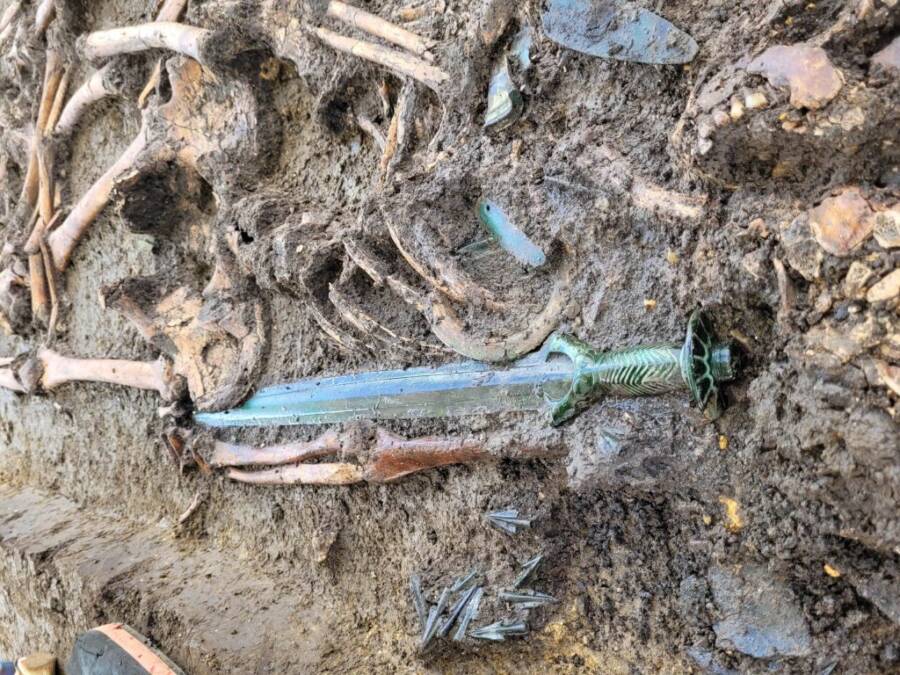The rare octagonal sword may date to the 14th century B.C.E. and was found buried with a man, woman, and child in Bavaria.

BAYERISCHES LANDESAMT FÜR DENKMALPFLEGEThe incredible artifact has been called “exceptional” and “very rare.”
Among a collection of Bronze Age burials in Nördlingen, Germany, archaeologists from the Bavarian State Office for the Preservation of Monuments came across an incredible find: a sword with an intricate hilt, so well-preserved that its blade still caught the light.
The blade, found nestled next to the remains of a man, a woman, and a child, may date back to the 14th century B.C.E. and has a rare, octagonal hilt made of bronze. Though greenish today, the hilt would have once shone like a penny.
“The sword and the burial still have to be examined so that our archaeologists can classify this find more precisely,” Mathias Pfeil, head of the Bavarian State Office for the Preservation of Monuments, explained in a statement about the incredible find. “But it can already be said: the condition is exceptional! A find like this is very rare!”

One of the most exceptional things about the sword — which is so well preserved that it “almost still shines” — is its octagonal hilt.
“The production of octagonal swords is complex because the handle is cast over the blade (so-called overlay casting). The decoration is made with an inlay and using hallmarks. While there are two real rivets, another pair of rivets are only implied,” the statement explained.

BAYERISCHES LANDESAMT FÜR DENKMALPFLEGEOne of the most exceptional things about the Bronze Age sword is its hilt, which could have only been manufactured by certain, skilled blacksmiths.
According to Newsweek, only the most capable Bronze Age blacksmiths could make swords like these (known as Achtkantschwert). Such blacksmiths were known to operate in the north and south of the country, but the sword’s provenance is, for the moment, unknown.
The sword’s purpose is also unclear. Archaeologists found that the sword had no impact marks, which suggests that it was never used as a weapon. Instead, it could have been used for ceremonial purposes or to indicate its owner’s high status. But the weapon was deadly — it was designed with a center of gravity that made it suitable for “slashing.”
So who were the people buried alongside this incredible artifact? And did they know each other? Archaeologists aren’t sure yet, though they believe that the man, woman, and child were buried in “quick succession.”
“It is not yet clear whether the persons were related or what the relationship between them was,” their statement explained.
Regardless of the sword’s purpose, or the identity of the people buried alongside it, archaeologists note that it’s incredible to have found it at all. There was widespread looting in this part of Germany during the 19th-century which led the removal of many historical artifacts from similar burial mounds.

BAYERISCHES LANDESAMT FÜR DENKMALPFLEGE / ARCHÄOLOGIE-BÜRO DR. WOIDICHThe sword was found nestled next to three skeletons belonging to a man, a woman, and a child.
“Sword finds from this period are rare and come either from burial mounds that were deliberately opened in the 19th century or as single, presumed sacrificial finds,” the archaeologists’ statement explained.
For now, archaeologists will attempt to learn more about the people in the grave and the sword they were buried with — a Bronze Age weapon so well preserved that it still has some shine, just as it did when it was first wielded some 3,000 years ago.
After reading about the incredibly well-preserved 3,000-year-old Bronze Age sword discovered in Germany, discover the story of the scuba diver in Israel who found a 900-year-old sword from the Crusades in the Mediterranean Sea. Or, see how a 10-year-old boy found an 18th-century sword with a metal detector he’d just gotten for his birthday.





